Tiles for the kitchen on the floor is one of the elements of the design of such a necessary room as a kitchen. It performs not only the practical function of the floor covering, but also the aesthetic, because the kitchen is the corner where not only the process of preparing various “delicacies” is taking place, but the whole family is also going to. There are also meetings of friends over a cup of coffee. There is a fairly wide range of floor tiles, but with its selection, from an inexperienced person in construction affairs, there are always a lot of questions. This article will help in some way to understand the types of tiles and prompt practical advice on its choice.
Floor tiles for kitchen – precautions when choosing
Considering the question of how to choose a floor tile for the kitchen, it is necessary to take into account some recommendations applicable to all types. First of all, it must have a high coefficient of friction, no lower than 0.75 (this information is displayed on the labeling). This requirement is explained by the fact that if in the kitchen, during cooking, water is spilled, then someone from loved ones or guests can slip and get injured.
Since the kitchen is the most visited place in the apartment, tiles must have high wear resistance. Also worth paying attention to such an indicator as resistance to household chemicals, because the kitchen floor is often contaminated with food particles and requires high-quality cleaning. It is equally important that the kitchen tiles on the floor have high strength – many objects of kitchen utensils are quite heavy, for example, a cast-iron frying pan or hammer, and if accidentally dropped, they are quite capable of damaging the surface.
You need to pay attention to the fact that the tiles correspond to the overall interior design and successfully combined with the color scheme. Designers recommend the kitchen with a small area to buy a tile of light tones, as it visually expands the space. But even if the kitchen is spacious and the choice fell on the dark variant, it is better to compensate it with light furniture and wall decoration. It is not necessary to select the tone of the tile, focusing only on the color of the wallpaper or items such as curtains, tablecloths and wallpaper, you can re-paste and replace the textile accessories, and tile rebuilding – rather laborious process.
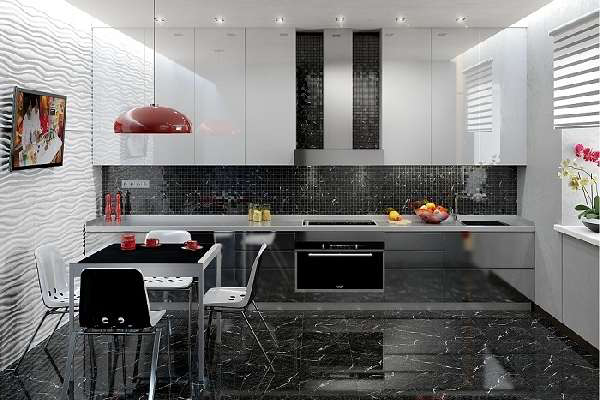
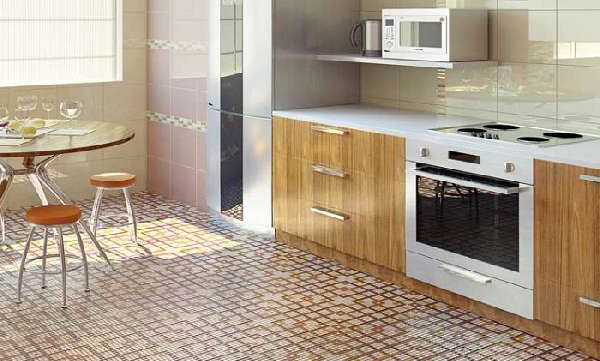
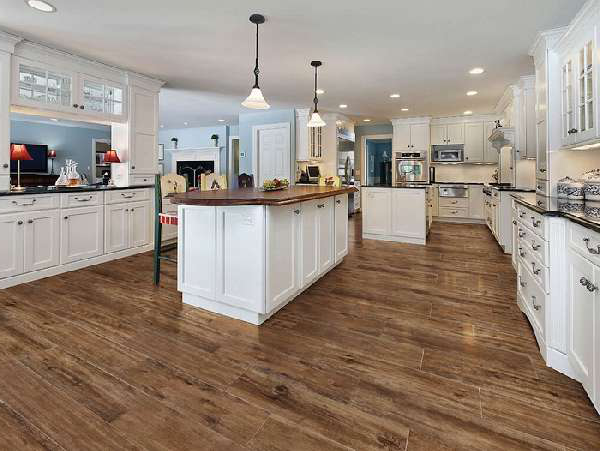
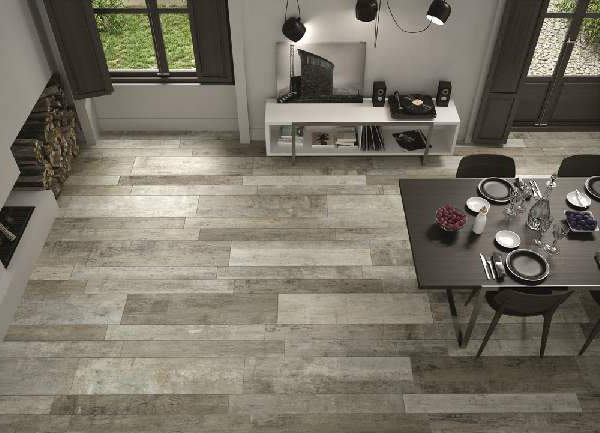
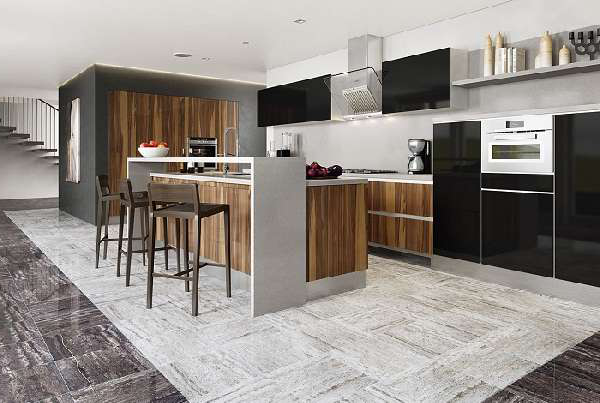
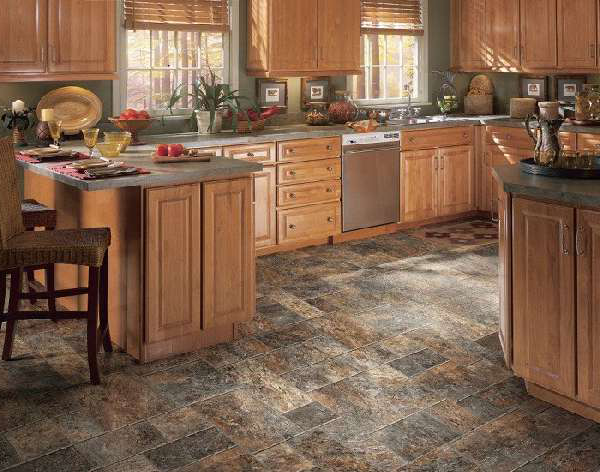
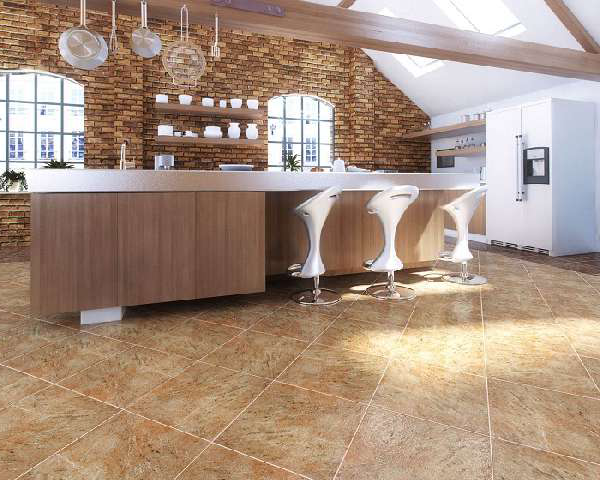
Tile for kitchen on the floor – photo and description of the main types
Having dealt with general questions on the choice of floor tiles, we will consider its varieties and features. Of all the variety, we can distinguish such basic types as:
- Porcelain stoneware (the most durable and durable)
- Glass (quite expensive, but especially attractive)
- PVC tile for kitchen on the floor (stacked without the use of glue with the help of locks)
- Natural stone (marble)
- Ceramic tile
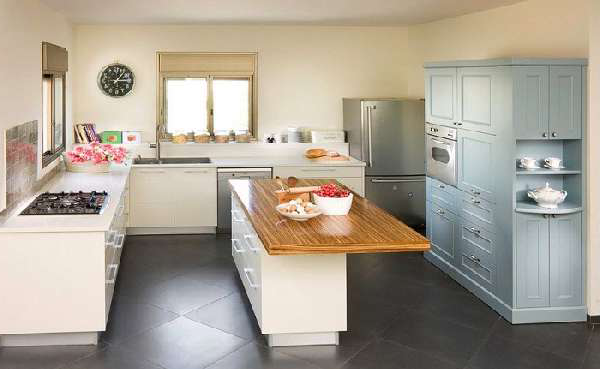
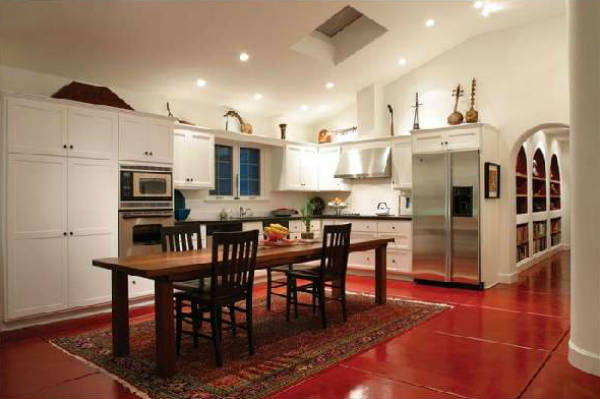
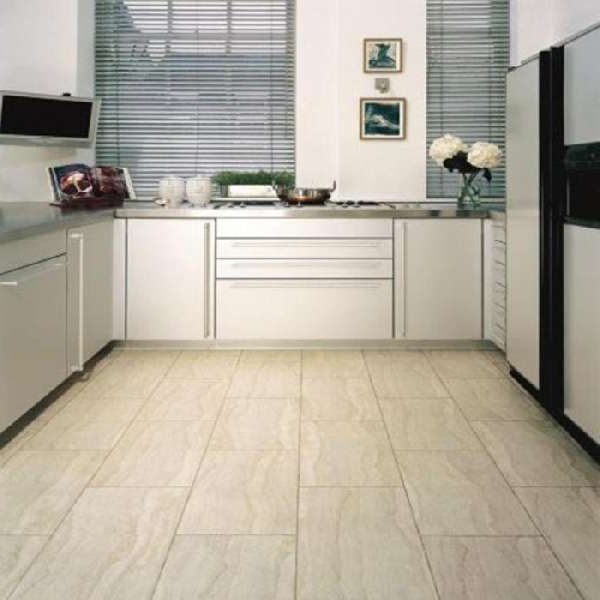
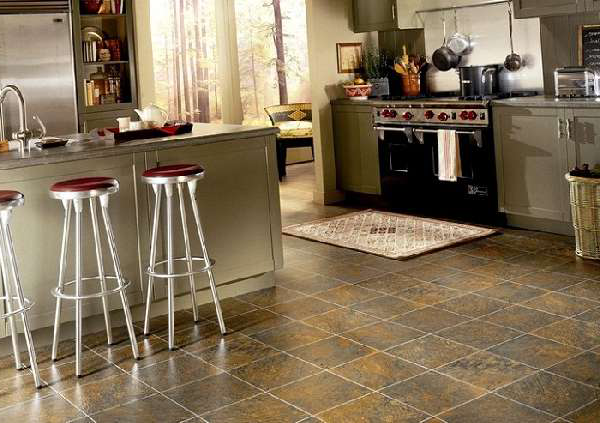

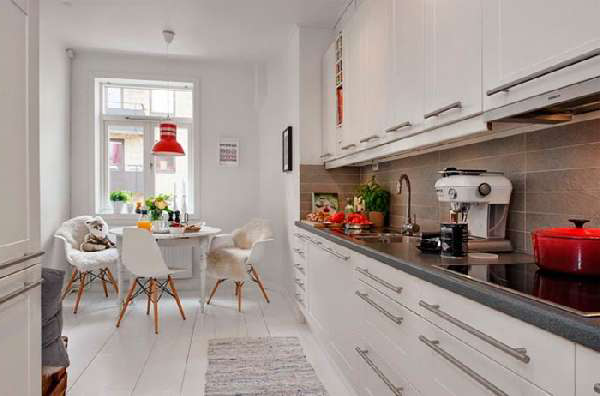
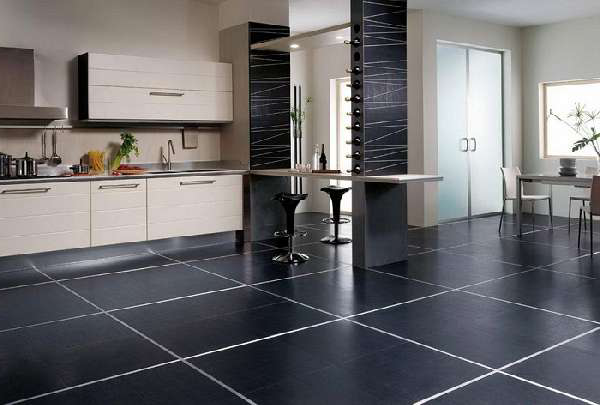
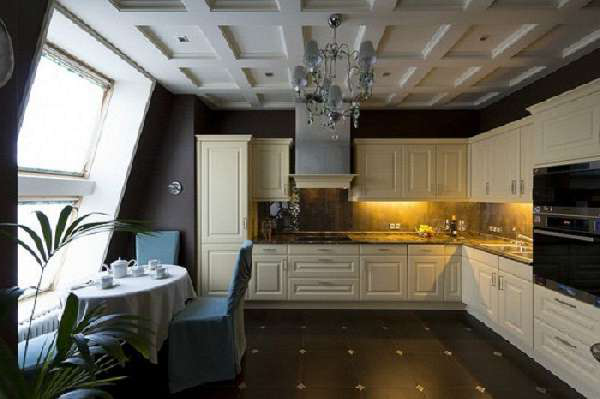
Ceramic tiles for kitchen floors – pros and cons
This is the most popular option due to cheapness, durability, high strength and wear resistance. Ceramic tiles meet all the above requirements. On sale is a large range of models that differ in color and pattern, and it is often difficult to decide which tile to choose for the kitchen on the floor.
Initially, it is important to determine the size. Considering the advice of specialists in this field, the size of the kitchen space plays an important role here. For example, for larger rooms, large tiles are suitable, and for small ones – small tiles or mosaic. You need to assess the condition of the surface on which the tile will be laid – if it is not absolutely smooth, it is worthwhile to dwell on a smaller version.
A relative innovation is ceramic tiles for kitchens on the floor imitating a stone, wood or skin of reptiles. Constant improvement of production technologies allows achieving such a high effect that only the professional can distinguish the tile from the stone in appearance. At the same time, the texture of marble, granite and other rocks is maximally transferred.
Ceramic tiles have a lot of advantages, but you should not keep silent about its shortcomings, which are much smaller, but, nevertheless, they also need to be known.
- First – ceramic tiles for the kitchen floor is a fairly hard coating so it likely to break due accidentally dropped dishes.
- Second – poor sound insulation (Before laying the tiles on the floor, one needs to lay a soundproof layer).
- And most importantly, ceramics itself is very cold and requires the installation of a warm floor system.
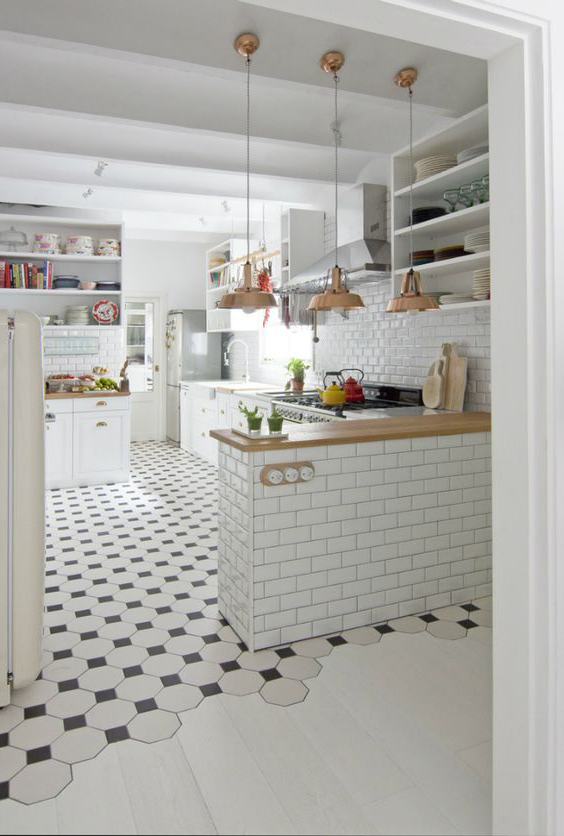
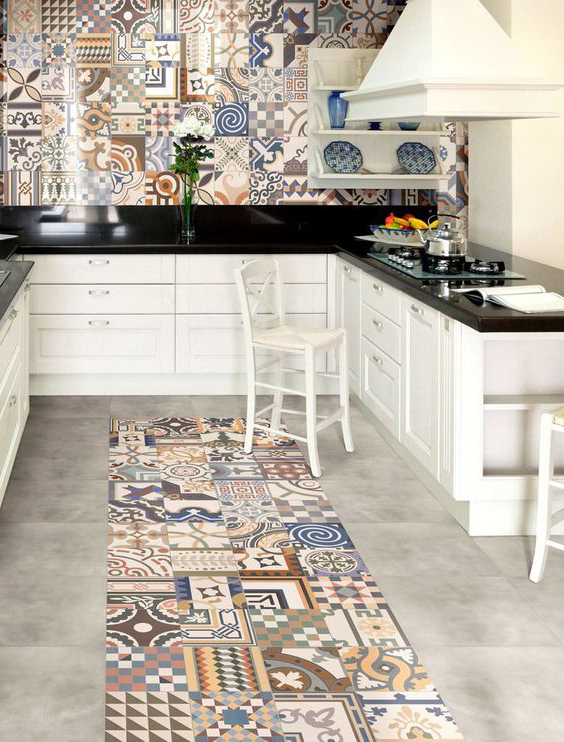
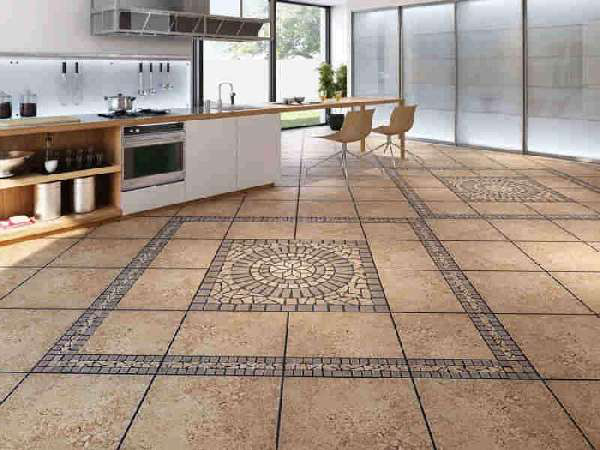
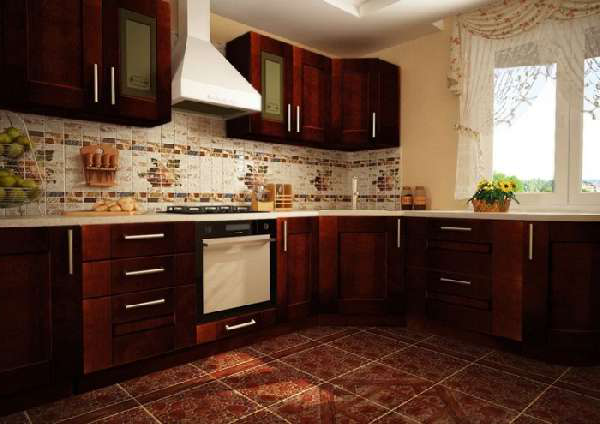
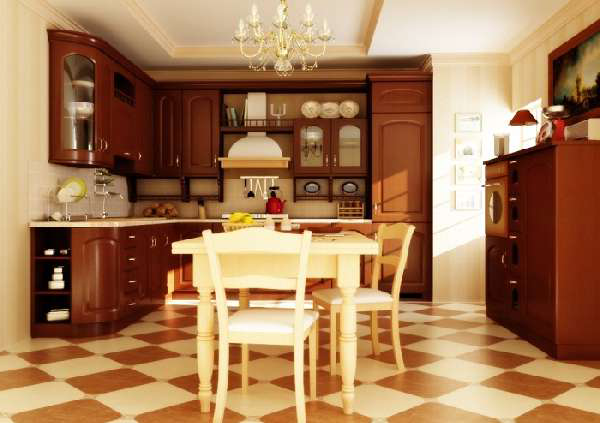
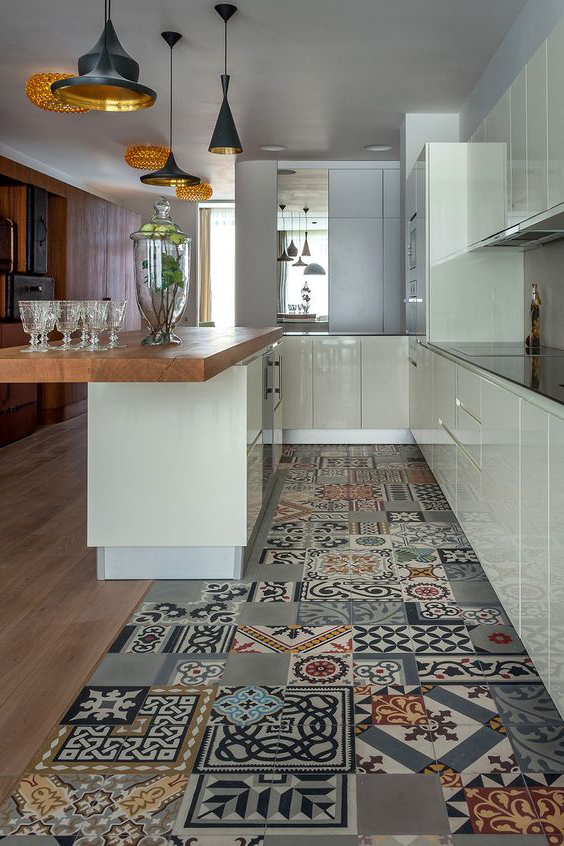
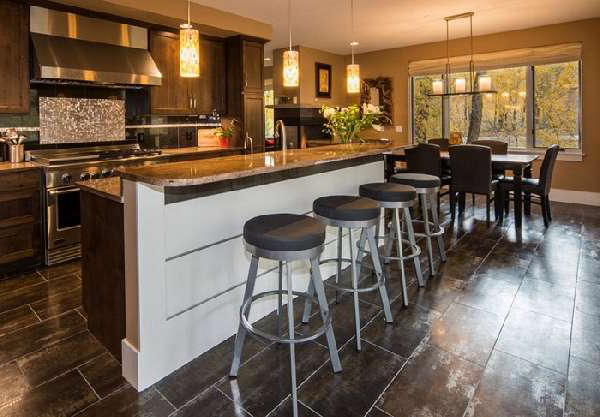
Warm floor in the kitchen under the tile
Tiles for the kitchen on the floor, due to its high thermal conductivity, is the best coverage of the underfloor heating system. It is able to make the kitchen warmer and more comfortable, which is especially important in the cold season. In addition, the warm floor provides proper heating of the body – from the bottom up and is considered an essential element in the family, where there are small children, for whom sex is the main place of play. The system of a warm floor happens of several kinds, namely:
Electrical floor heating in the kitchen
Electric floor heating in the kitchen under the tile with heating cable or infrared film. When installing this type of system, it is necessary to check the quality of the wiring and verify its ability to withstand heavy loads. Using a heating cable can lead to quite serious costs associated with high power consumption. In this regard, much more economical is the use of infrared film. This material consumes much less, and, in addition, is much cheaper in itself. Another difference is that if any point of the cable is damaged, it will be necessary to replace the entire system, and if a certain section of the film fails, only it can be replaced.
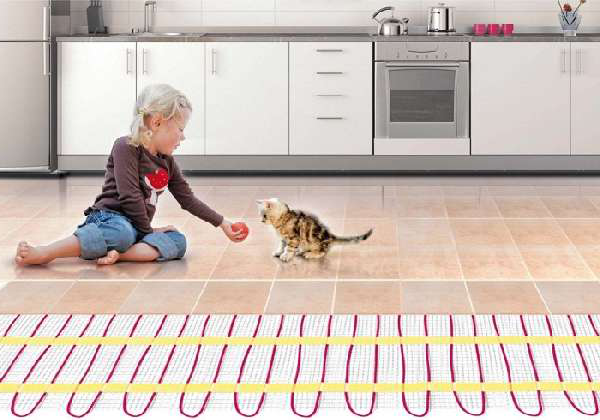
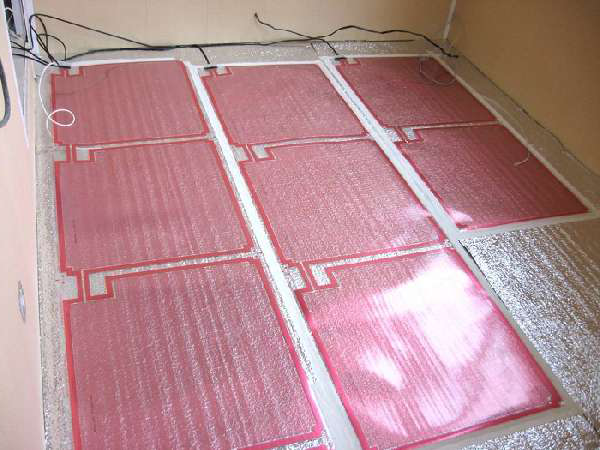
Water floor under the tiles in the kitchen
The water heating floor in the kitchen under the tile is a more complex and expensive construction. For its installation, a perfectly flat surface is required to avoid permissible bending of the pipes. Installation of such a system is expensive than electric warm floor, but the costs will soon be justified, since the energy consumption for water heating is much less. In the system of the water floor, arranged in an apartment or a private house, where it is used constantly, in most cases, water is poured. In suburban homes and dachas where owners live seasonally, preference is given to antifreeze.
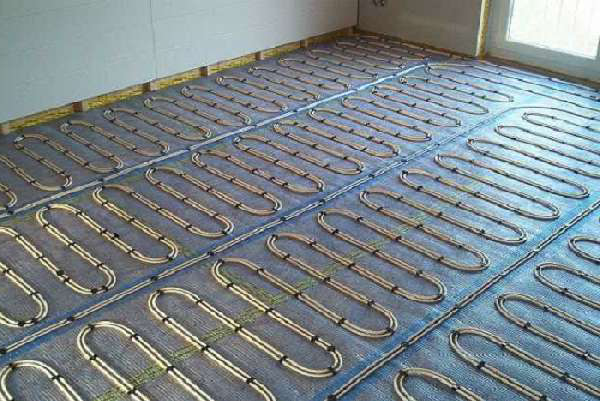
To summarize, it is worth noting that the final choice remains for the owner, but in terms of economy, durability and efficiency, the infrared option has a significant advantage.